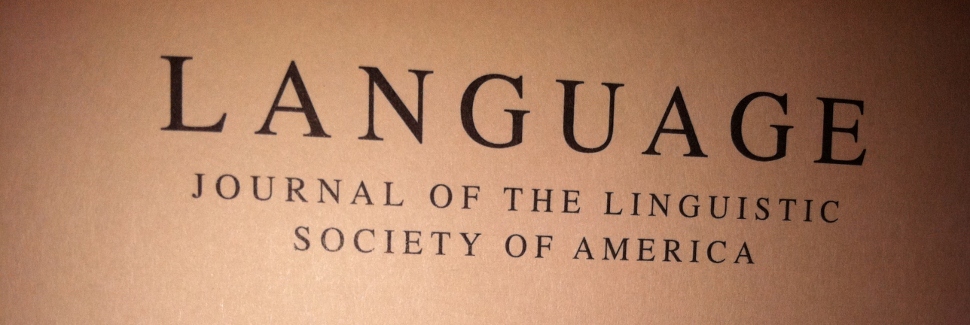Article on asymmetry in affixation receives Best Paper in Language Award
Why are suffixes more common than prefixes across the languages of the world? A forthcoming article suggests that prosody, the stress and intonation patterns of speech, may provide the answer.

"Asymmetries in the prosodic phrasing of function words: Another look at the suffixing preference", by Nikolaus P. Himmelmann of the Universität zu Köln, has been named the Best Paper in Language for 2014. Himmelman's article is in Volume 90, No. 4 of Language, which will be published in December 2014. Language is the flagship academic journal of the Linguistic Society of America and one of the leading journals in the field of linguistics.
Himmelmann's abstract describes the role of prosodic boundaries in creating affixational asymmetry:
It is a well-known fact that across the world’s languages there is a fairly strong asymmetry in the affixation of grammatical material in that suffixes considerably outnumber prefixes in typological databases. This article argues that prosody, specifically prosodic phrasing, plays an important part in bringing about this asymmetry. Prosodic word and phrase boundaries may occur after a clitic function word which precedes its lexical host with sufficient frequency so as to impede the fusion required for affixhood. Conversely, prosodic boundaries rarely, if ever, occur between a lexical host and a clitic function word following it. Hence, prosody does not impede the fusion process between lexical hosts and postposed function words, which therefore become affixes more easily.
The full abstract is available on the LSA's Forthcoming Articles page.
"Asymmetries in the prosodic phrasing of function words" is the third article to receive the Best Paper in Language Award. The Best Paper in Language Award is the sixth of the 2015 LSA Awards to be announced; further award announcements will be made in the coming weeks. All LSA awards will be presented at the 2015 LSA Annual Meeting on Saturday, January 10, 5:30 PM PT at the Hilton Portland & Executive Tower.
